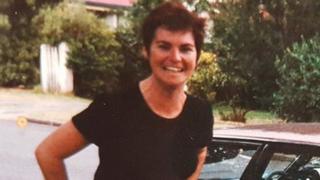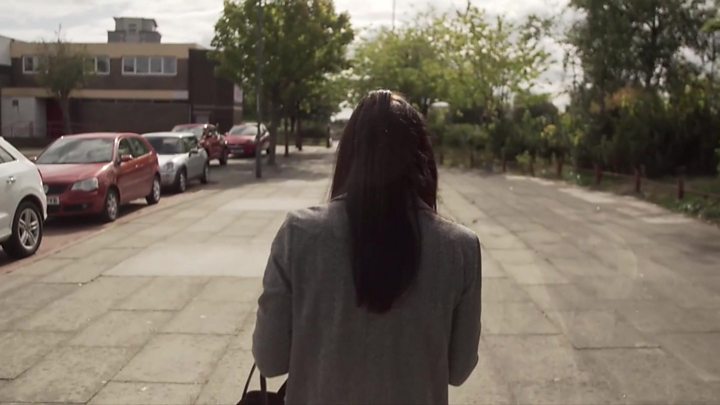‘I’ve mapped child murders since my stepfather killed two girls’
Sherele Moody’s pain drove her to begin counting the murders of women and children in Australia. …

 Image copyright Sherele Moody
Image copyright Sherele Moody Sherele Moody is no stranger to violence. In addition to spending her spare time documenting the violent deaths of Australian women and children, she has an intense personal experience of it.
From a young age, she was subjected to years of violent abuse by her mother. Each time her mother hurt her, she’d run away – before eventually being returned by welfare authorities.
But her most intense experience, one that has shaped her life since, happened to a young girl she had never met.
In 1990, Ms Moody’s stepfather abducted, raped and murdered nine-year-old Stacey-Ann Tracy, then dumped her body in a creek in a rubbish bag.
‘Feeling in the pit of my stomach’
Ms Moody was just 18 when Barry Hadlow killed Stacey-Ann in rural Queensland, and recalls vividly events which happened afterwards.
The teenager had just returned to her mother’s home because her younger sister, Karen, said she was having a tough time. “I left my job and came straight back to ensure she was ok,” she says.
Her stepfather picked her up and, on the drive back to the family home, was telling her how a young girl had gone missing from the area.
“He seemed excited to be joining the search the next day,” she says. “I remember him putting his State Emergency Service volunteer uniform on and heading off.”
The next thing she remembers is several loud bangs on the door and feeling “gobsmacked” to see police stream in and search the house.
She went on to become witness for the Crown against her stepfather. Her mother, Leonie, stayed with and defended Hadlow – whom she had married when Ms Moody was 15. “She was his biggest backer in court. It was sad to watch,” Ms Moody says.
Ms Moody even attended Stacey-Ann’s funeral. “I can still feel the horrible feeling in the pit of my stomach knowing my stepfather did this – and mum was standing by him,” she says.
Another shock was in store: this wasn’t the first time her stepfather had killed.
Police informed Ms Moody that, 27 years earlier, he had abducted and murdered a five-year-old girl, Sandra Bacon. Her body was wrapped in a corn sack and left in a car boot.
Hadlow had lived near each of his victims and was on parole when he murdered Stacey-Ann. “The system gave him an opportunity when it shouldn’t have,” Ms Moody says.
Ms Moody’s mother “never wavered” in her support of Hadlow, leading to an estrangement: “I felt betrayed by her. She brought into the house a killer who’d abducted a girl the same age as my twin sisters.”
Now 48, Ms Moody hasn’t seen her mother since she was 21. Hadlow died in prison in 2007.
Guilt – then anger
Ms Moody says she “went off the rails” and was “not living a very good life” after Hadlow’s arrest, but later found purpose by completing her schooling and becoming a journalist.
“My entire adult life, I’ve lived with the guilt of him killing Stacey-Ann,” she says. “Not a day goes by I don’t think about her.”
In recent years, her guilt morphed into anger. She knew she needed to do something in her spare time to funnel it, which is how the Australian Femicide and Child Death Map was born.
Using Google Maps, Ms Moody is documenting every violent death of women and children in Australia, so far dating back to the 1800s.
She uses the skills from her day job as a journalist to memorialise these women and children, so they’re no longer just grim statistics.
“It upset me that Stacey-Ann’s death wouldn’t be remembered after her family and people like me moved on,” she says.
“Every country commemorates its soldiers but not those who die of violence. I wanted to document the true extent, impact and gendered nature of violence on our communities. The fact is, whether you’re a man, woman or child, you’re most likely to be killed by a man.
“We can use their stories to make change moving forward, in particular about male violence – by addressing the attitudes towards women that drive it.”
On average, one woman a week is murdered by her current or former partner in Australia, according to the most recent Australian Institute of Criminology statistics.
Each heart on the interactive map clicks through to a story of a violent death, containing original research from Ms Moody, based on newspaper archives, coroner’s reports and appeal judgements.
It features tales of neglect, family and domestic violence and stranger violence. Details of what happened to the perpetrator are included. A voice is given to the victim’s family, where possible.
The very first death Ms Moody documented on the map was her stepfather’s murder of Stacey-Ann Tracy. She has since documented 1,880 violent deaths – spending about an hour on each one – all in her own time.
Many violent perpetrators get off lightly, Ms Moody says: “Sentencing is often abysmal. I just mapped the death of a woman stabbed 40 times by a man. He got out within six months. He’s out now, enjoying his life. She’s another heart on my femicide map.”
A fresh start
As an adult, Ms Moody asked for her file which had been kept by welfare authorities. It was fat with stories of abuse, neglect and violence. Her personal experience fosters a deep connection to each story: “I hold every one of these women in my heart.”
The femicide map is part of The Red Heart Campaign, which Ms Moody began in 2015 after reporting an “overwhelming” number of domestic violence stories. The campaign was originally a story-telling platform and has since morphed into a recording platform for violence against women and children.
It has been viewed 500,000 times in less than 12 months.
Not everyone has responded well; Ms Moody regularly receives death and rape threats. It’s not just online trolling. In September, her horse was killed – its neck had been broken. Before that, her dog was poisoned so badly, it melted away his mouth, tongue and oesophagus.

Media playback is unsupported on your device
Police are investigating both incidents, with potential links to four threats from men who live nearby.
“These men want the map removed – because it shows the extent that violence is gendered,” she says.
More positive recognition came in June when Ms Moody was shortlisted in Australia’s top journalism awards, The Walkleys, for her innovative work using Google Maps.
“It’s a pretty thankless task, so that recognition was awesome,” she says.
Some names in this piece have been changed to protect identities.
If you have been affected by this story then BBC Action Line has a list of organisations which may be able to help. In Australia, you can call 1800RESPECT on 1800 737 732 or visit www.1800RESPECT.org.au.




